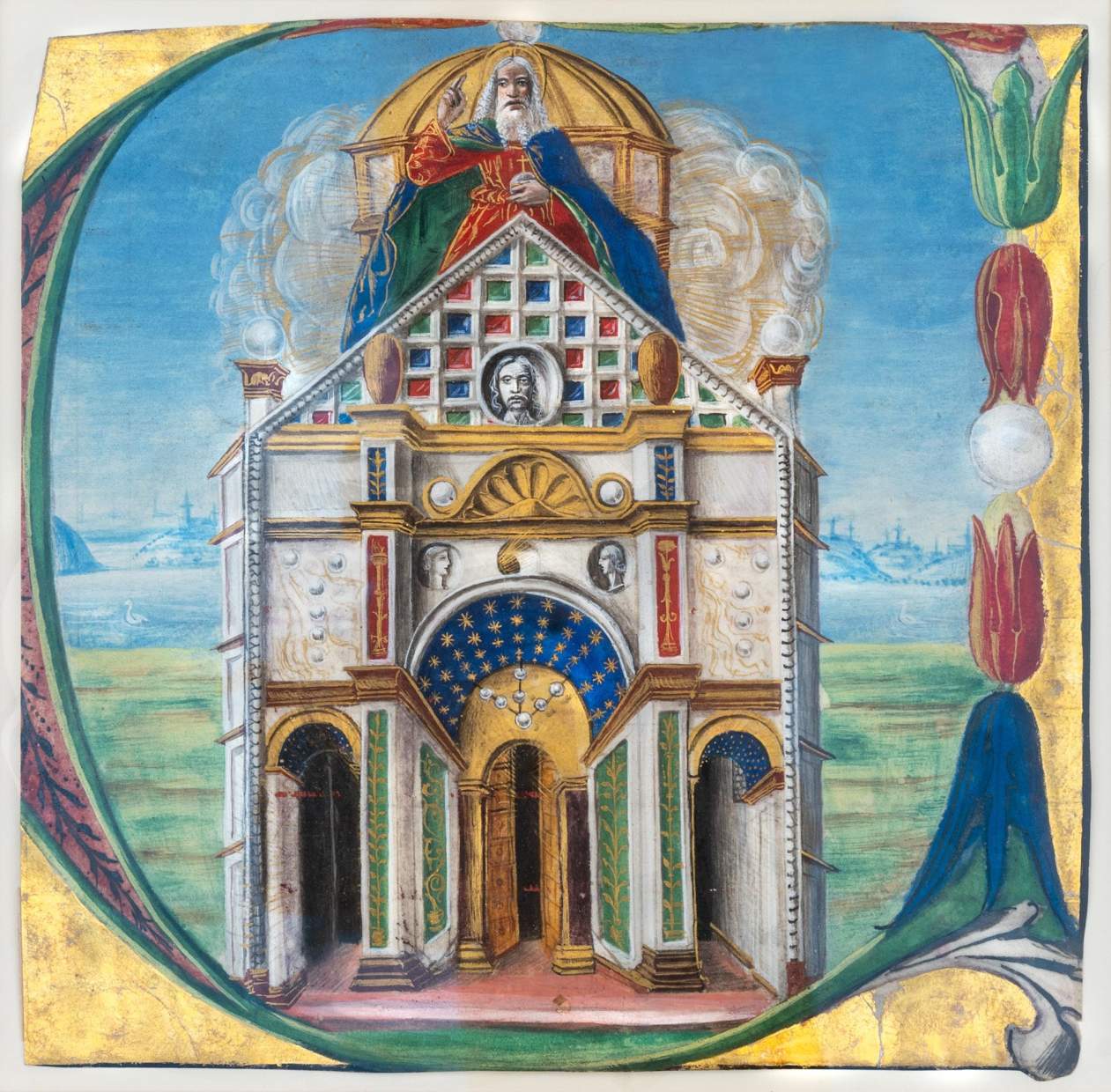Artworks


God the Father above a temple, historiated initial T, cutting from choirbook on vellum, illuminated by a follower of the Master of Anna Sforza (Protasio Crivelli) Lombardy (Milan), 1490-1500
Initial: 145 x 147 mm. Tempera and burnished gold on vellum. – Image closely cropped; part of the initial trimmed, minor flaking in the gold. Mounted and framed.
Hide caption
This large initial T contains a grandiose temple-like structure, more reminiscent of Grecian architecture than a medieval church. Pillars adorned with acanthus leaves support a pediment covered by bas-reliefs and a marble bust of Christ. Pearl-like spheres are embedded in the façade decorated with golden highlights that imitate precious marble.
Above this architectural marvel, God the Father is depicted with one hand lifted in a blessing gesture while his other holds a golden orb, a symbol of divine authority. God is clothed in a vibrant red tunic and indigo cloak with a sumptuous green lining. The colours of his sartorial splendour are echoed in the temple's ornate decorations and give the work great coherence. Radiating golden rays against a swirling white cloud, the figure of God imbues the entire composition with a surreal, heavenly aura.
Despite deviating from strict perspective rules of the time, the artist masterfully creates depth with an airy landscape fading to a pale blue backdrop. This unconventional approach is balanced by a harmonious palette of deep blues, bright reds, and velvety greens, skilfully repeated throughout the illumination.
Stylistically, this miniature originates in the artistic milieu of the Master of Anna Sforza, active at the Milanese Sforza Court from 1480-1520. This artist is known for collaborations with prominent artists like Giovanni Pietro da Birago and Ambrogio de Predis. The Master of Anna Sforza's influence is tangible in this work's complex architectural details and rich colour palette. The figures, depicted with doll-like appearance and wide-set eyes, reflect distinctive artistic predilections.
This particular manuscript, possibly from a follower of the Master of Anna Sforza, exemplifies the courtly taste for elaborate illumination. It stands as a testament to the artist's craftsmanship, intertwining classical architectural motifs with vibrant, jewel-like colours to create a visual narrative of divine splendour.



